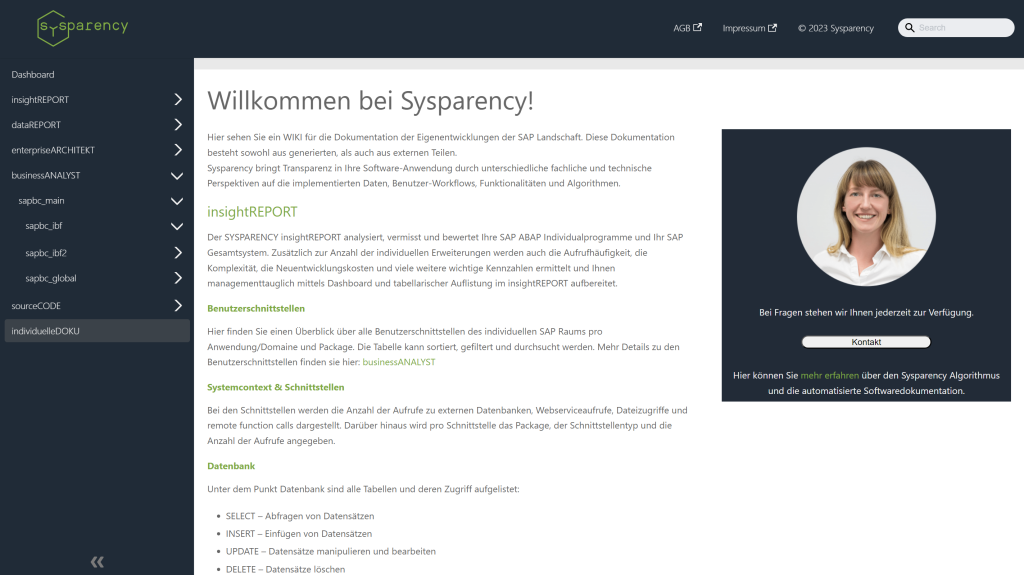Sysparency automates procedural documentation of historical and business-critical business software
Sysparency has had the pleasure of working with a reputable company in the field, which is not named in this reference due to confidentiality. The project aimed to create detailed and proper procedural documentation of a critical industrial system

As part of the “Procedural Documentation” project, an initial analysis identified gaps in the documentation and transparency of the core of the systems. Both automated and manual methods were used to create functional, technical documentation from existing source code. In parallel, Sysparency conducted workshops and interviews to capture the functional dimension and then correlate and structure the technical and functional insights.
Solution approach
Sysparency used its innovative docuWIKI technology for automatic procedure documentation. This software creates functional and partially technical documentation of functional logic, API documentation and class diagrams including inheritances. This enabled the implementation of comprehensive and precise documentation of software and business aspects of the system. Iterative feedback loops and conventional requirements engineering methods were used to ensure fully comprehensive and detailed procedural documentation.
Added value and results
Working with Sysparency enabled the company to significantly increase visibility and understanding regarding critical systems. The documentation produced by Sysparency is characterized by its precision and detail, which allows the company to manage and optimize the systems more effectively. Furthermore, the comprehensive insight into the functional and technical aspects of the system led to an increase in quality and safety.
The most important advantage of using SYSPARENCY docuWIKI was the reduction of costs from the high seven-digit euro range to a six-digit euro amount. The lead time of the project was reduced to ten percent of the originally planned duration.
Long-term advantages
Sysparency’s intensive and tailored approach has not only enabled the company to deepen its knowledge and understanding of its systems, but it is now able to apply this knowledge in a targeted manner to strengthen its position in the market and increase its competitiveness. The documentation created by Sysparency serves as a solid basis for future developments and innovations.
Sysparency is proud to have successfully completed this project and looks forward to further collaborations to realize innovative and future-proof solutions in this important industry sector.
Interested or have further questions?
Arrange a no-obligation initial consultation with our SYSPARENCY experts.
We will introduce you to our products and answer all your questions in a straightforward online meeting.
